


|
I went to Kutna Hora by train from Prague to see the Bone Church. A church which features human bones that have been arranged in various designs eg a chalice. It is about a kilometer walk from the railway station travelling in the general direction of the town center. Another major attraction in Kutna Hora is the Church of Saint Barbara, a cathedral sized church which was built over many centuries commencing in 1388. |
The church was originally part of a Cistern monastrey founded in 1142. According to legend a monk who was sent to Jerusalem in 1278 bought back soil from the area where Jesus was cruxified (Golgotha). Golgotha, soil from the area where Jesus was cruxified, mixed with church cemetary soil transformed the cemetary into very desirble place to be buried. Towards the end of the 15th century its area was reduced. Exhumed bones were placed in an ossaury. The bones were originally arranged into pyramids by a partially-blind monk. Upon completion of the task he supposedly regained his sight. The current decorative arrangements date from the 16th century.
Bones are arranged in various designs, the shape of letters; a goblet; curtains; a coat of arms and four large bell shaped mounds. Most date from the 14th and early 15th century. Many were killed by the Black Death (1346-1353) and during the Hussite wars (1419-34)
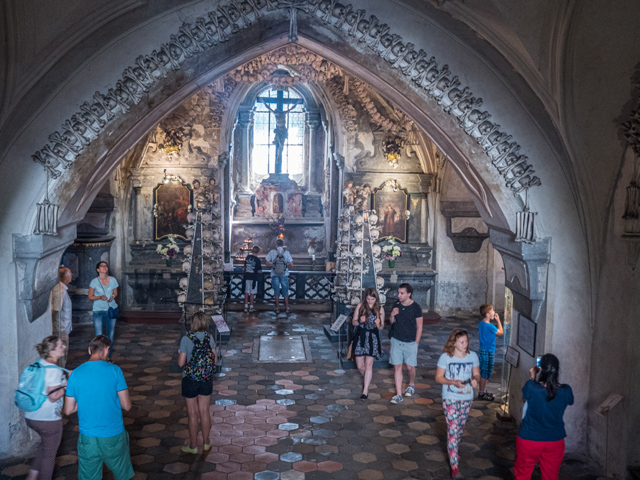
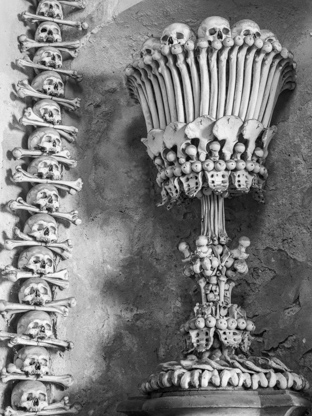

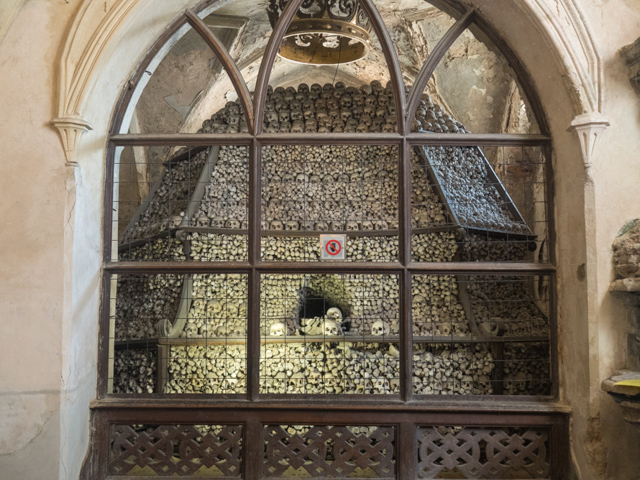
Having not done any research I had no idea, apart from the Bone Church, what other attraction were in Kutna Hora. Leaving the bone church I walked along the main road until I reach a picturesque square where I consumed a small meal. It was here I saw three tent like spires which I felt were worth investigating.

Along the way towards the mysterious spires I encountered a large tank decorated with Gothic designs. Built in 1493-95 it surrounds a water tank which was filled using wooden pipelines. You can still obtain water from a tap. The water pressure is strong enough to punch the bottle from your hand if you are not careful. A nice little discovery. I continued my journey.
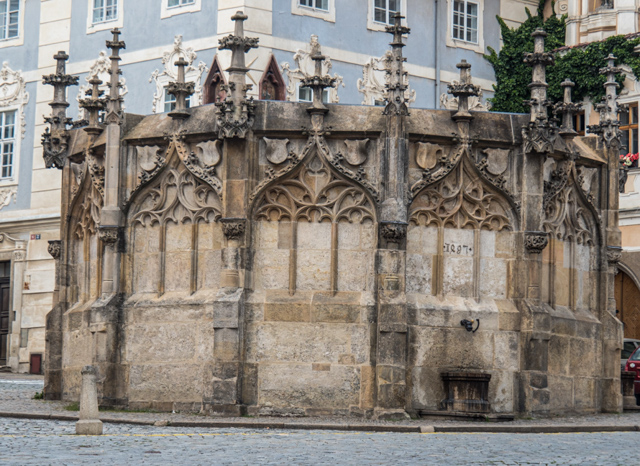
The object of my quest is in sight. It is the UNESCO-listed, cathedral sized Church of St Barbara. While approaching its rear along a cobblestoned promenade with the Jesuit College on the right-hand side and a baroque statue lined wall on the left, I stopped and looked back at the view over Kutna Hora. A view dominated by St Jame's church. Commenced in 1330 and completed in 1420, it is the town's oldest church. I later attempted to visit, but it was closed.
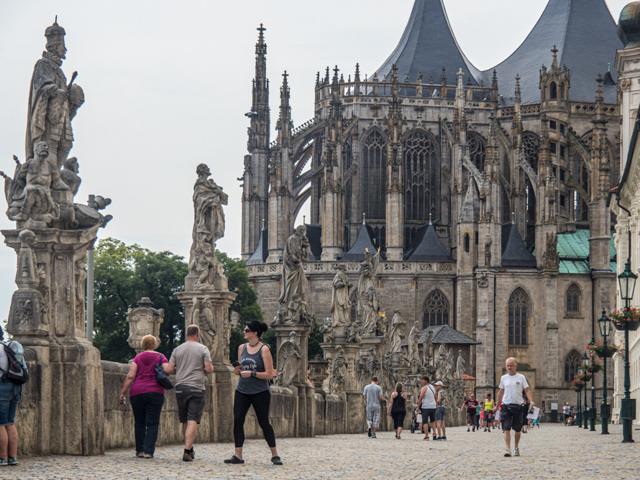

Approaching St Barbara's from the rear, I paid the entrance fee of 60 Czech Kroner and entered.
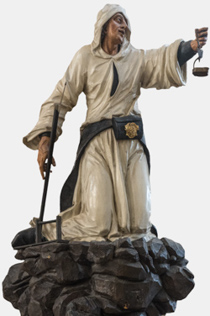
The church is named the Church of St Barbara's because is it dedicated to the Virgin Barbara, a Christian matyr, the patron saint of mining. Kutna Hora use to be a silver mining town. Today its economy is based on tourism and wine making. Founded by rich mine owners, building commenced in 1388. Consecration was in 1403. Although not completed and intially without a roof, it was used for prayers. The Hussites War which started in 1420 delayed construction for 60 years. Lack of finance also caused delays. Completion finally occurred in 1905 after a major restoration and building of the main altar.
Because of the 400 year construction period, it has been built in a number of styles including Gothic, Baroque and Neo-Gothic.
The interior is ornately decorated. Amongst its decorations is a statue of a miner. Appriopriate because St Barbara's is considered to be a miners church. On the ceiling miner's arms are displayed.
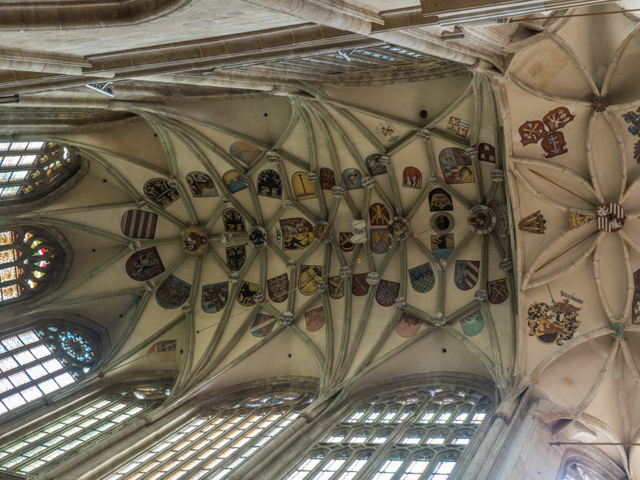
On the walls are many partially restored medieval frescoes. It addition to religious themes, scenes from the secular life of Kutna Hora are also presented.
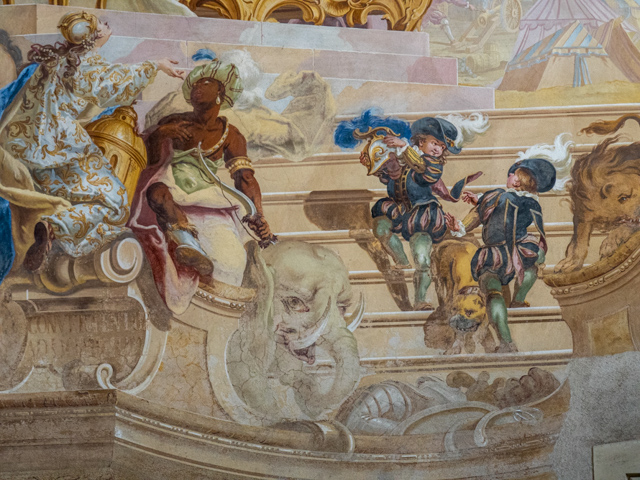
Even more prominant are the huge Neo-Gothic stain glass windows which date from the 19th and early 20th century. They depict historical scenes from Kutna Hora and Czech history.

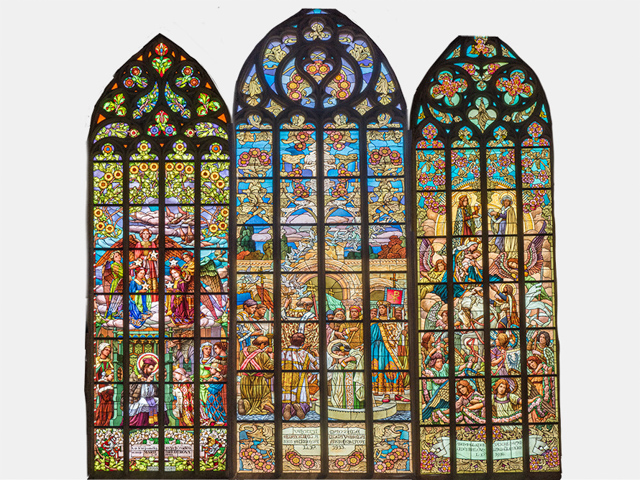
The main alter, installed between 1901 and 1905 features an image of the Lord's Last Supper.
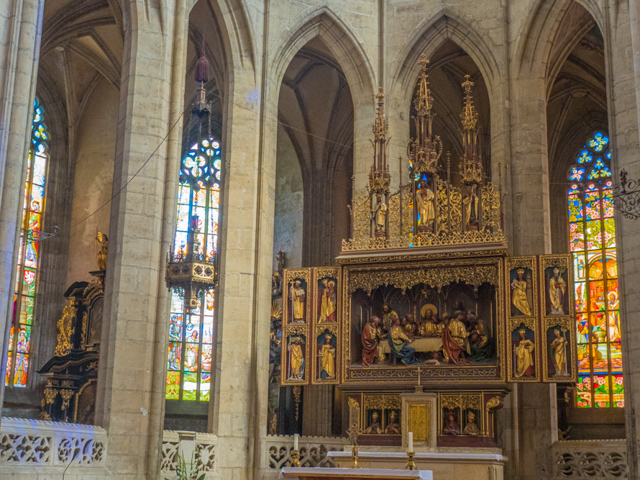
I left the church by the front entrance.
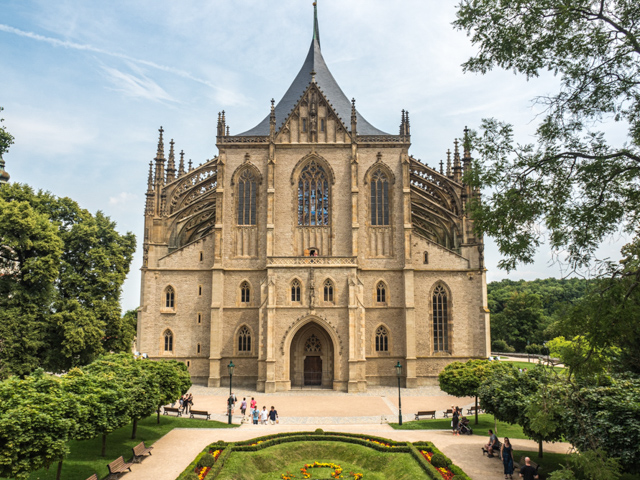
Kutna Hora can be visited on a day trip from Prague. However, more than one day is needed to properly appreciate its attractions. In addition to St Barbara's and the Bone Church there is, amongst other attractions, the Czech Museum of Silver; the Gallery of Central Bohemia, housed in the Jesuit College; St James's church and the Cathedral of the Assumption of Our Lady.